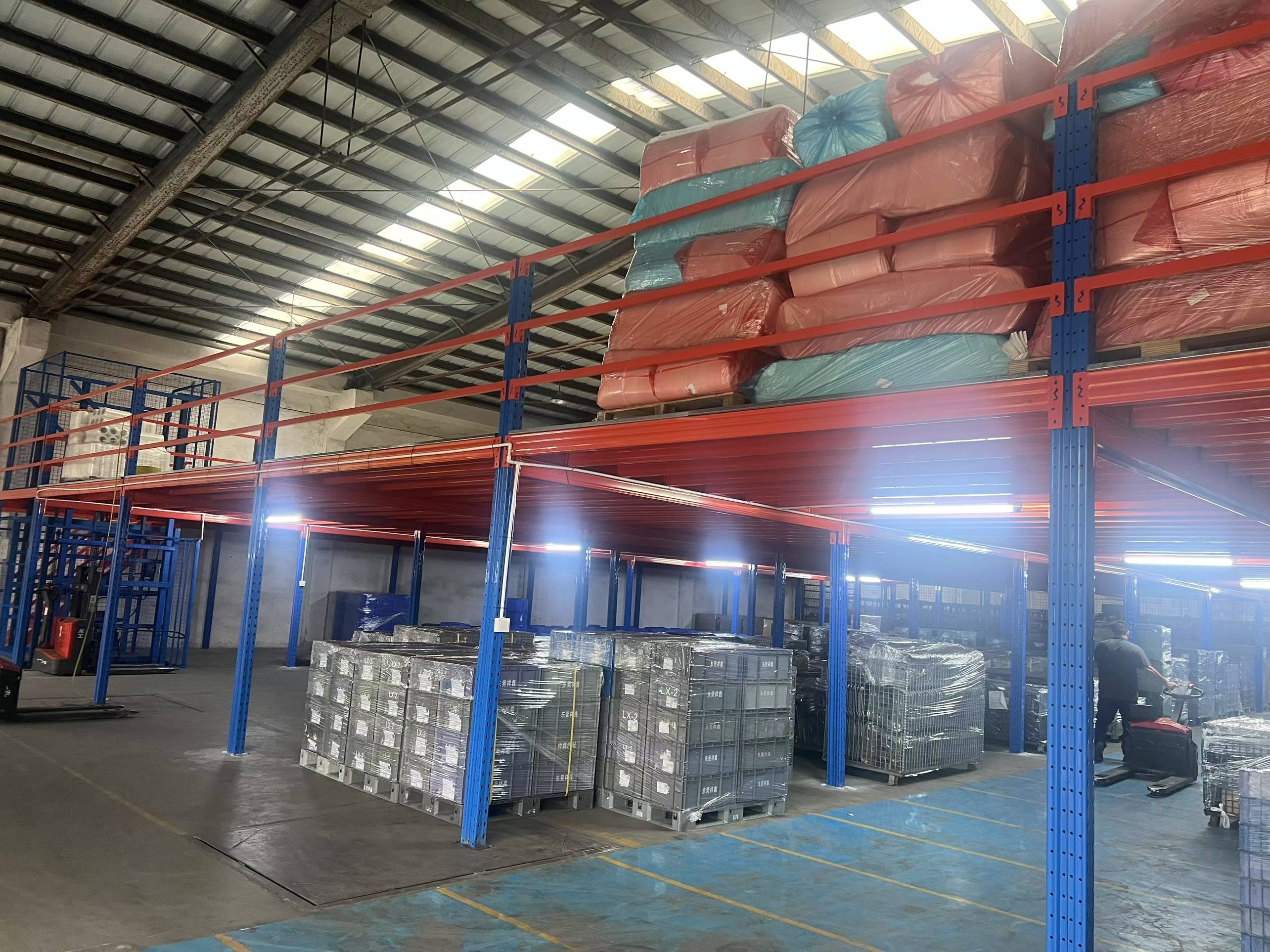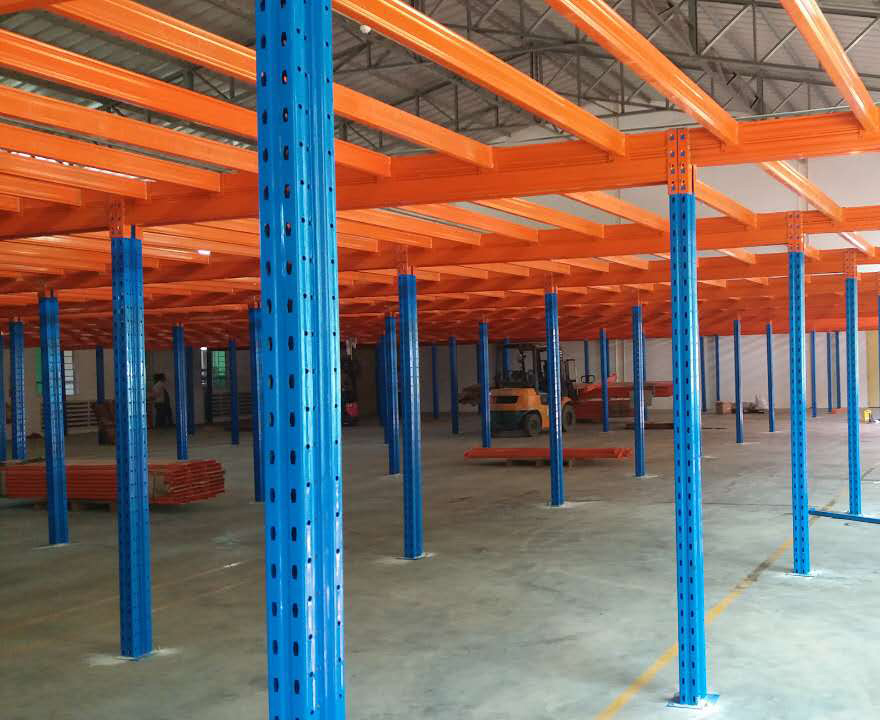In the fast-paced world of logistics and supply chain management, efficiency is the name of the game. At the heart of many modern distribution centers lies a fundamental concept: the rack and stack warehouse. This system, while seemingly straightforward, is the backbone of organized storage and rapid fulfillment. But what exactly does it entail, and how can it be optimized while avoiding common pitfalls? This deep dive will explore seven crucial aspects of the rack and stack warehouse model, providing a comprehensive understanding of its operation and challenges.

At its core, a rack and stack warehouse is a storage facility that utilizes vertical space through the installation of sturdy steel shelving units, or racks. Inventory is then "stacked" onto these racks, either directly by hand for smaller items or with material handling equipment like forklifts for palletized goods. The primary goal of this system is to maximize storage density within a given footprint. By building upwards, a rack and stack warehouse can store significantly more goods than a traditional floor-storage operation. This model is ubiquitous because of its versatility; it can be adapted for a wide range of products, from small electronics in bins to large, bulky appliances on wide-span shelving. The fundamental principle is a clear separation between the storage infrastructure (the racks) and the inventory (the stack), allowing for a highly organized and scalable environment.
A successful rack and stack warehouse is built on more than just shelves and products. It's an integrated system composed of several key components. First are the storage racks themselves, which come in various types such as selective pallet racking (offering direct access to every load), drive-in/drive-through racking (for high-density storage of similar items), and cantilever racking (for long, awkward goods). The second component is the material handling equipment. This includes forklifts (counterbalance, reach trucks, order pickers), pallet jacks, and potentially automated guided vehicles (AGVs) that navigate the aisles to store and retrieve items. Third is the inventory management system, often a Warehouse Management System (WMS), which acts as the brain of the operation. It tells operators exactly where to rack and stack each item for optimal efficiency. Finally, a well-designed layout that considers aisle width, picking paths, and traffic flow is essential for a smooth-running rack and stack warehouse.
Why has the rack and stack warehouse model remained so dominant? The advantages are numerous and significant. The most prominent benefit is the dramatic increase in storage capacity. By utilizing vertical space, companies can store more inventory without expanding their building, leading to substantial cost savings on real estate. Secondly, it greatly enhances organization and inventory control. A well-planned rack and stack warehouse has a designated location for every SKU, which minimizes lost stock and simplifies cycle counting. This organization directly leads to a third advantage: improved picking efficiency and order accuracy. Pickers can locate items quickly, following optimized routes generated by the WMS, which reduces labor time and errors. Furthermore, this model improves safety by providing a stable structure for storing goods, reducing the risk of collapse associated with haphazard stacking.
Despite its many benefits, managing a rack and stack warehouse is not without its challenges. One of the most frequent issues is ineffective space utilization. This can manifest as honeycombing—where empty pallet spaces are left behind after retrieval, creating unusable gaps that waste valuable rack space. Another common problem is poor slotting, where fast-moving items are placed in hard-to-reach locations, creating a significant bottleneck in the picking process and increasing labor costs. Inventory inaccuracy is another critical challenge; if the WMS does not perfectly reflect the physical stock on the racks, it leads to pick failures, delayed shipments, and frustrated customers. Additionally, safety concerns are ever-present. Overloaded racks, improper stacking of goods, or collisions from forklifts can lead to dangerous accidents and product damage. Finally, as a business grows, a static rack and stack warehouse layout can become a constraint, requiring a costly and disruptive reconfiguration to adapt to new inventory profiles or order volumes.

Overcoming the challenges requires a proactive approach to optimization. The layout of a rack and stack warehouse should be a dynamic blueprint designed for flow. A critical first step is implementing an intelligent slotting strategy. This involves analyzing sales data to place high-velocity SKUs in the most accessible "golden zone"—typically between the knee and shoulder height of an order picker—to minimize travel and reach time. Secondly, warehouse managers should regularly analyze and adjust aisle widths. While narrower aisles increase storage density, they require specialized equipment like narrow-aisle reach trucks. Finding the right balance is key. Using the ABC analysis method to classify inventory (where 'A' items are the most frequently picked) and positioning them accordingly can dramatically streamline operations. A well-optimized rack and stack warehouse is a living system that evolves with business needs.
In today's landscape, a rack and stack warehouse cannot reach its full potential without robust technological support. A modern Warehouse Management System (WMS) is indispensable. It transforms the warehouse from a static storage space into an intelligent, responsive hub. The WMS directs all put-away and picking activities, ensuring that inventory is slotted correctly from the start. It provides real-time visibility into stock levels, location by location, virtually eliminating inventory inaccuracy. Furthermore, a advanced WMS can generate the most efficient pick paths, batching orders together to minimize travel time within the rack and stack warehouse. Integration with barcode scanners or RFID technology automates data capture, reducing human error and providing instant updates to the system. This technological layer is what separates a good warehouse from a great one.
The classic rack and stack warehouse is not being replaced, but it is certainly evolving. The future points towards greater integration of automation and data analytics. We are seeing the rise of automated storage and retrieval systems (AS/RS) that work within the rack structure, using robotic cranes to store and retrieve pallets or totes with unparalleled speed and accuracy. Another trend is the use of dense, dynamic storage solutions like mobile pallet racking, where entire rows of racks move on rails to create a single aisle, maximizing storage density in a rack and stack warehouse. Furthermore, the data collected by WMS and IoT sensors is being leveraged for predictive analytics, forecasting demand, and pre-emptively identifying potential bottlenecks. The fundamental principle of racking and stacking will endure, but its execution is becoming smarter, more connected, and more efficient than ever before. In conclusion, the rack and stack warehouse is a deceptively complex ecosystem. Its success hinges on a thoughtful integration of physical infrastructure, intelligent processes, and powerful technology. By understanding its components, advantages, and inherent challenges, businesses can transform their storage facilities from a cost center into a strategic asset that drives supply chain excellence.
 Wechat
Wechat
 Whatsapp
Whatsapp